Related Research Articles

Chiang Kai-shek was a Chinese politician, revolutionary, and military leader. He was the head of the Nationalist Kuomintang (KMT) party, General of the National Revolutionary Army, known as Generalissimo, and the leader of the Republic of China (ROC) in mainland China from 1928 until 1949. After being defeated in the Chinese Civil War by the Chinese Communist Party (CCP) in 1949, he led the ROC on the island of Taiwan until his death in 1975.

The Kuomintang (KMT), also referred to as the Guomindang (GMD), the Nationalist Party of China (NPC) or the Chinese Nationalist Party (CNP), is a major political party in the Republic of China, initially based on the Chinese mainland and then in Taiwan since 1949. The KMT is a centre-right to right-wing party and the largest in the Pan-Blue Coalition. Its primary rival is the Democratic Progressive Party (DPP) and its allies in the Pan-Green Coalition. As of 2024, the KMT is the largest single party in the Legislative Yuan. The current chairman is Eric Chu.

Chiang Ching-kuo was a politician of the Republic of China. The eldest and only biological son of Generalissimo Chiang Kai-shek, he held numerous posts in the government of the Republic of China and ended martial law in 1987. He served as the 3rd premier of the Republic of China between 1972 and 1978 and was president of the Republic of China from 1978 until his death in 1988.

Sun Li-jen was a Chinese Nationalist (KMT) general, a graduate of Virginia Military Institute in the United States, best known for his leadership in the Second Sino-Japanese War and the Chinese Civil War. His military achievements earned him the laudatory nickname "Rommel of the East". His New First Army was known as the "Best Army under heaven" and credited with effectively confronting Japanese troops in the 1937 Battle of Shanghai and in the Burma Campaign, 1943–1944.
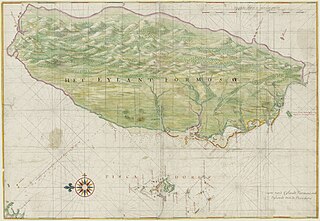
As a result of the surrender and occupation of Japan at the end of World War II, the islands of Taiwan and Penghu were placed under the governance of the Republic of China (ROC), ruled by the Kuomintang (KMT), on 25 October 1945. Following the February 28 massacre in 1947, martial law was declared in 1949 by the Governor of Taiwan, Chen Cheng, and the ROC Ministry of National Defense. Following the end of the Chinese Civil War in 1949, the ROC government retreated from the mainland as the Chinese Communist Party (CCP) proclaimed the establishment of the People's Republic of China. The KMT retreated to Taiwan and declared Taipei the temporary capital of the ROC. For many years, the ROC and PRC each continued to claim in the diplomatic arena to be the sole legitimate government of "China". In 1971, the United Nations expelled the ROC and replaced it with the PRC.

The Ministry of State Security is the principal civilian intelligence, security and secret police agency of the People's Republic of China, responsible for foreign intelligence, counterintelligence, and the political security of the Chinese Communist Party (CCP). One of the largest and most secretive intelligence organizations in the world, it is headquartered in the Haidian District of Beijing, with powerful semi-autonomous branches at the provincial, city, municipality and township levels throughout China.
Larry Wu-tai Chin was a Chinese Communist spy who worked for the United States Government for 37 years (1944–1981), including positions at the U.S. Army and the CIA, while secretly being a mole for the Chinese Communist Party's intelligence apparatus from the very beginning. He kept passing classified documents and secret information to the People's Republic of China even after his retirement, until he was finally exposed in 1985.
The Three-Noes Policy was a policy established in April 1979 and maintained by President Chiang Ching-kuo of the Republic of China, commonly known as Taiwan, in response to the People's Republic of China's attempts to have direct contact with the ROC. When the United States broke diplomatic ties with the ROC in 1979, the PRC believed that it had complete leverage in convincing the ROC government to talk. President Chiang Ching-kuo refused, reiterating that there were to be "no contact, no negotiation and no compromise" (不接觸,不談判,不妥協) with the Chinese Communists.
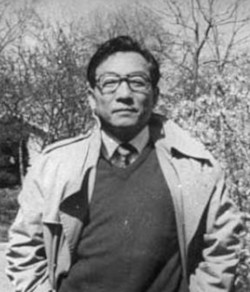
Henry Liu, often known by his pen name Chiang Nan, was a Taiwanese-American writer and journalist. He was a vocal critic of the Kuomintang, then the single ruling party of the Republic of China in Taiwan, and was most famous for writing an unauthorized biography of Chiang Ching-kuo, then president of the Republic of China. He later became a naturalized citizen of the United States, and resided in Daly City, California, where he was assassinated by Bamboo Union members who had been reportedly trained by the Kuomintang's military intelligence division.

The Shanghai massacre of 12 April 1927, the April 12 Purge or the April 12 Incident as it is commonly known in China, was the violent suppression of Chinese Communist Party (CCP) organizations and leftist elements in Shanghai by forces supporting General Chiang Kai-shek and conservative factions in the Kuomintang. Following the incident, conservative KMT elements carried out a full-scale purge of communists in all areas under their control, and violent suppression occurred in Guangzhou and Changsha. The purge led to an open split between left-wing and right-wing factions in the KMT, with Chiang Kai-shek establishing himself as the leader of the right-wing faction based in Nanjing, in opposition to the original left-wing KMT government based in Wuhan, which was led by Wang Jingwei. By 15 July 1927, the Wuhan regime had expelled the Communists in its ranks, effectively ending the First United Front, a working alliance of both the KMT and CCP under the tutelage of Comintern agents. For the rest of 1927, the CCP would fight to regain power, beginning the Autumn Harvest Uprising. With the failure and the crushing of the Guangzhou Uprising at Guangzhou however, the power of the Communists was largely diminished, unable to launch another major urban offensive.
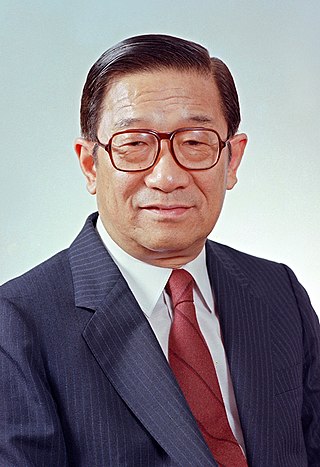
Lee Huan was a Taiwanese politician. He was Premier of the Republic of China from 1989 to 1990, serving for one year under former President Lee Teng-hui. He was the father of Lee Ching-hua and Diane Lee. He was born in Hankou, Hubei.

The Kuomintang (KMT) is a Chinese political party that ruled mainland China from 1927 to 1949 prior to its relocation to Taiwan as a result of the Chinese Civil War. The name of the party translates as "China's National People's Party" and was historically referred to as the Chinese Nationalists. The Party was initially founded on 23 August 1912, by Sun Yat-sen but dissolved in November 1913. It reformed on October 10, 1919, again led by Sun Yat-sen, and became the ruling party in China. After Sun's death, the party was dominated from 1927 to 1975 by Chiang Kai-shek. After the KMT lost the civil war with the Chinese Communist Party in 1949, the party retreated to Taiwan and remains a major political party of the Republic of China based in Taiwan.
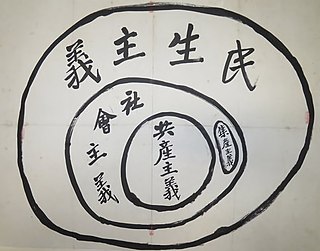
The historical Kuomintang socialist ideology is a form of socialist thought developed in mainland China during the early Republic of China. The Tongmenghui revolutionary organization led by Sun Yat-sen was the first to promote socialism in China.
Project Guoguang was an attempt by the Republic of China (ROC), based in Taiwan, to reconquer mainland China from the People's Republic of China (PRC) by large scale invasion. It was the most elaborate of the ROCs plans or studies to invade the mainland after 1949. Guoguang was initiated in 1961 in response to events involving the PRC, particularly the Great Leap Forward, the Sino-Soviet split, and the development of nuclear weapons. Guoguang was never executed; it required more troops and material than the ROC could muster, and it lacked support from the United States. The use of a large scale invasion as the initial stage of reunification was effectively abandoned after 1966, although the Guoguang planning organization was not abolished until 1972. The ROC did not abandon the policy of using force for reunification until 1990.

Ray Steiner Cline was an official at the United States Central Intelligence Agency and is best known for being the chief CIA analyst during the Cuban Missile Crisis.

The Republic of China (ROC), or simply China, was a sovereign state based on mainland China from 1912 to 1949 prior to the government's relocation to Taiwan, where it continues to be based today. The ROC was established on 1 January 1912 during the Xinhai Revolution against the Qing dynasty, ending the imperial history of China. The Republican government was ruled by the Kuomintang (KMT) as a one-party state based in Nanjing from 1927, until its flight to Taipei on 7 December 1949 following the KMT's de facto defeat by the Chinese Communist Party (CCP) in the Chinese Civil War. The CCP proclaimed the People's Republic of China on 1 October 1949, while the ROC retains control over the "Free Area", with the political status of Taiwan remaining in dispute to this day.

Liang Su-yung was a Taiwanese politician who served in the first Legislative Yuan from 1948 to 1991. He was elevated to vice president of the parliament in 1988, and retired in 1991 as its leader. Prior to his political career, he worked as a human rights lawyer.
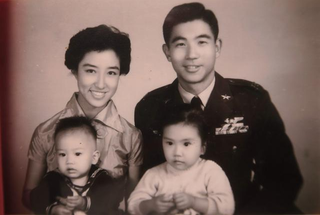
Chang Liyi, also known as Jack Chang, was a pilot in the Republic of China Air Force with the rank of major. A member of the CIA-trained Black Cat Squadron, he flew the American U-2 reconnaissance aircraft to spy on China's nuclear program. He was shot down on 10 January 1965 over Baotou, Inner Mongolia, and held in mainland China for 17 years. Chang was released from custody in 1969 and sent back to his hometown, in 1982 he was able to leave the mainland but was not granted permission to return to Taiwan until 1990, living the interim years in the United States.
The Intelligence Bureau of the Joint Staff Department of the Central Military Commission a bureau of the Joint Staff Department. It is one of the People's Republic of China's primary intelligence organizations and the principal military intelligence organ of the People's Liberation Army (PLA).
Between 2010 and 2012, intelligence networks of the US Central Intelligence Agency (CIA) were dismantled by Chinese intelligence authorities in an intelligence breach. Intelligence gathering there was crippled for years afterward.
References
- 1 2 Peter R. Moody (1977). Opposition and dissent in contemporary China. Hoover Press. p. 302. ISBN 978-0-8179-6771-0. Archived from the original on 2023-04-10. Retrieved 2010-11-30.
- ↑ Jay Taylor (2000). The Generalissimo's son: Chiang Ching-kuo and the revolutions in China and Taiwan. Harvard University Press. p. 195. ISBN 978-0-674-00287-6. Archived from the original on 2023-04-10. Retrieved 2010-06-28.
- ↑ Nançy Bernkopf Tucker (1983). Patterns in the dust: Chinese-American relations and the recognition controversy, 1949-1950. Columbia University Press. p. 181. ISBN 978-0-231-05362-4. Archived from the original on 2023-04-10. Retrieved 2010-06-28.
- ↑ Weiner, Tim (2007-08-07). Legacy of Ashes: The History of the CIA. Knopf Doubleday Publishing Group. pp. 66–68. ISBN 978-0-385-52432-2.
- 1 2 "Two CIA Prisoners in China, 1952–73", Apr 05, 2007, CIA
- ↑ "Extraordinary Fidelity" Archived 2022-01-06 at the Wayback Machine , Apr 05, 2007, CIA
- ↑ "Extraordinary Fidelity" , Jun 05, 2013, (transcript), CIA
- ↑ Weiner, Tim (2007). Legacy of Ashes: the History of the CIA. London : Allen Lane. pp. 66–68, 645. ISBN 978-1-84614-046-4.
- 1 2 Meyskens, Covell F. (2020). Mao's Third Front: The Militarization of Cold War China. Cambridge, United Kingdom: Cambridge University Press. doi:10.1017/9781108784788. ISBN 978-1-108-78478-8. OCLC 1145096137. S2CID 218936313.
- ↑ Brown, Kerry (2023). China Incorporated: The Politics of a World Where China is Number One. London: Bloomsbury Academic. ISBN 978-1-350-26724-4.
- 1 2 "Jiang's U.S.-Built Plane Is Reportedly Bugged". Los Angeles Times. 2002-01-19. Archived from the original on 2023-11-03. Retrieved 2023-11-03.
- 1 2 3 Dorfman, Zach (15 August 2018). "Botched CIA Communications System Helped Blow Cover of Chinese Agents". Foreign Policy . Archived from the original on 5 January 2022. Retrieved 16 August 2018.
- 1 2 Mazzetti, Mark; Goldman, Adam; Schmidt, Michael S.; Apuzzo, Matthew (May 20, 2017). "Killing C.I.A. Informants, China Crippled U.S. Spying Operations". The New York Times . Archived from the original on May 20, 2017. Retrieved May 20, 2017.
- 1 2 Goldman, Adam (January 16, 2018). "Ex-C.I.A. Officer Suspected of Compromising Chinese Informants Is Arrested". The New York Times . Archived from the original on July 12, 2021. Retrieved January 16, 2018.
- ↑ Hannon, Elliot (May 1, 2019). "Former CIA Agent Pleads Guilty to Spying for China". Slate. Archived from the original on October 7, 2021. Retrieved September 27, 2019.
- ↑ "Former CIA Officer Pleads Guilty to Conspiracy to Commit Espionage". U.S. Department of Justice . 2019-05-01. Archived from the original on 2021-11-20. Retrieved 2019-05-07.
- 1 2 3 4 Zhang, Angela Huyue (2024). High Wire: How China Regulates Big Tech and Governs Its Economy. Oxford University Press. doi:10.1093/oso/9780197682258.001.0001. ISBN 9780197682258.
- ↑ Strong, Matthew (June 22, 2018). "China shipyard manager might have leaked Liaoning secrets to CIA". Taiwan News . Archived from the original on October 7, 2021. Retrieved June 26, 2018.
While initial suspicion focused on graft and corruption, later reports suggested that Sun might have handed over key details of the Liaoning project to CIA agents.
- ↑ "Hu Wenming ex-head of China's aircraft carrier program investigated for corruption". thestandard.com.hk. 13 May 2020. Archived from the original on 12 January 2021. Retrieved 11 January 2021.
- ↑ Dorfman, Zach (December 21, 2020). "China Used Stolen Data to Expose CIA Operatives in Africa and Europe". Foreign Policy . Archived from the original on December 16, 2021. Retrieved December 22, 2020.
- 1 2 Barnes, Julian E.; Goldman, Adam (2021-10-05). "Captured, Killed or Compromised: C.I.A. Admits to Losing Dozens of Informants". The New York Times . ISSN 0362-4331. Archived from the original on 2022-01-06. Retrieved 2021-10-07.
